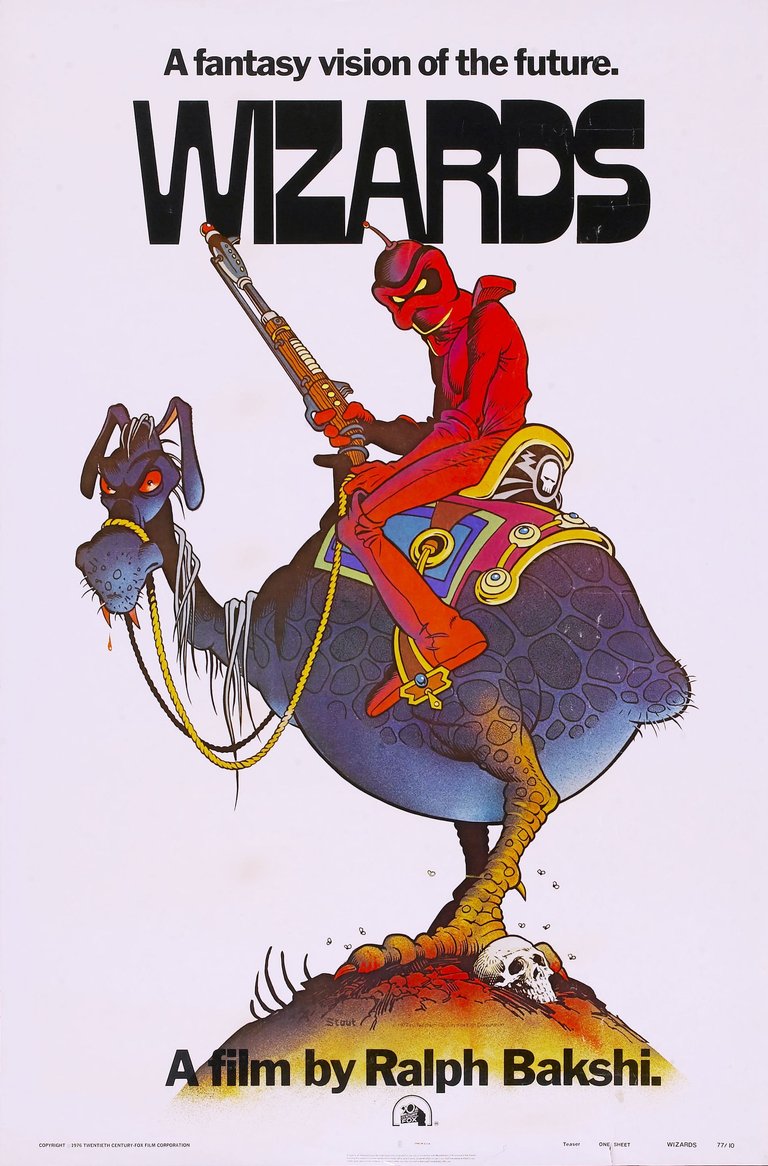
credit
Details:
Title: Wizards (1977)
Director: Ralph Bakshi
Produced by: Bakshi Productions, Lionsgate
Starring: Bob Holt, Richard Romanus, Susan Tyrrell, Steve Gravers
Genre: Animated Fantasy, Science Fiction, Adventure
The AZL Take:
I LOVED IT. This movie had almost everything. It was a work of art. Bakshi uses the techniques and tools at his disposal to make live action footage feel like a part of his creation - and he does so with skillful mastery. This movie contained no nudity that I noticed, but had plenty of hot cartoon ladies, which I think is cool - allbeit, this is one of the least important considerations on my list.
There was definitely a strong element of collective consciousness at play in this work as it hailed to a long forgotten tragedy...we all seem to feel the tension and pain of this cataclysm buried in our mutual history, but there are no records to speak on behalf of crumbled nations...a matter which also comes up in the film.
Due to the specific nature of certain elements at play in the film, I found myself almost continuously questioning: is this a product of collective consciousness, or is this something more willfully aware? Ralph Bakshi is from Palestine, of Krymchak Jewish descent - his family came over to New York during WWII - so it's entirely possible that he is drawing more literally from the things he personally experienced or had impressed upon him at a young age. Regardless of from whence his inspiration came, it's fair to say that this movie can be regarded easily and accurately as high quality art or entertainment.
I really enjoy digging into the details on things, especially when they pop out at me. This one did take me down a nice short little rabbit hole that I'll share with you now.
Did you take a good look at the movie poster (top of the page)? I did - and I noticed something weird. I noticed what looked like a signature and some writing...but the signature didn't look anything like "Ralph" or "Bakshi," otherwise I might not have paid it any mind.
I pulled up the image and zoomed in:
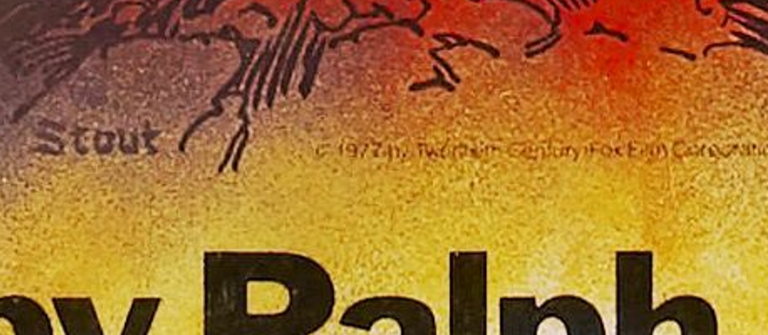
...but who is "Stout," and why would his signature be found in the art of famed animator Ralph Bakshi? So I searched "Stout artist 1977" and found:
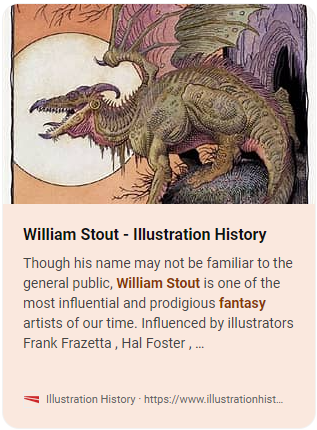
This seemed likely to be my guy, so I opened the page and read further:
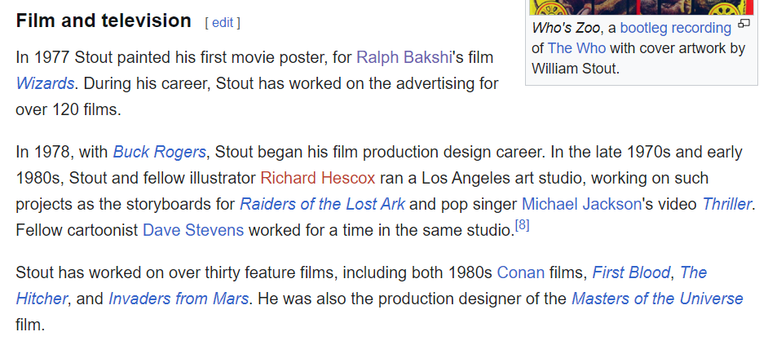
...and there it was. Turns out, this Stout dude does illustrations for lots of things, like Michael Crichton's Jurassic Park book even - so I guess Bakshi (or 20th Century Fox) decided to have another artist do the cover illustration. Interesting...but what does it all mean???
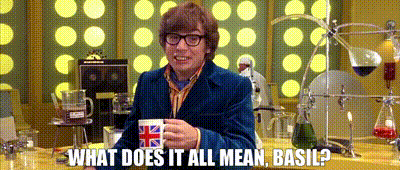
credit
...nothing. It means nothing, but it's interesting, no? Also, now there's a new cool artist to look up! - Now let's get to the screen shots already! (Oh yeah, I took a lot of screen shots on this one 😜)
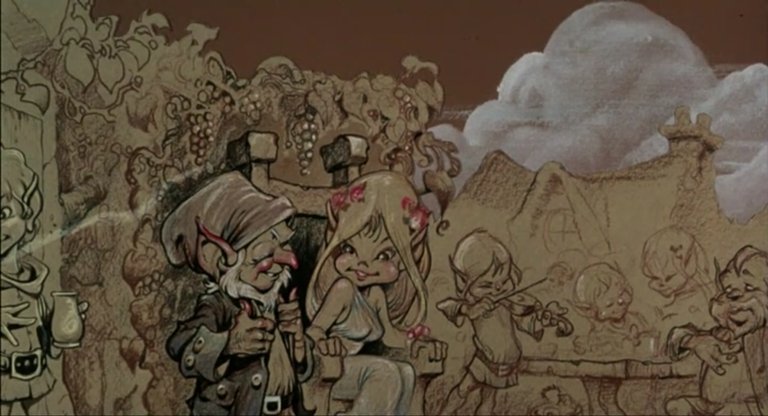
Plot Summary:
Wizards is a 1977 animated feature directed by Ralph Bakshi, blending fantasy and science fiction in a post-apocalyptic world where magic has replaced advanced technology. Set centuries after a catastrophic war between magical and technological civilizations, the remnants of humanity struggle to survive in a mystical, sparsely populated land. The film follows the story of Avatar, a benevolent wizard, and his battle against his evil brother Blackwolf, who seeks to bring back the destructive technological devices that led to the destruction of the old world.
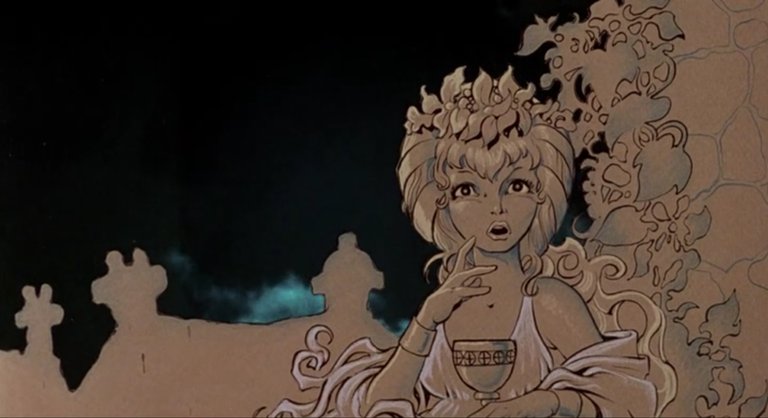
The story unfolds in the post-apocalyptic world of Scorch, a land inhabited by a mixture of mystical creatures, magical beings, and scattered human survivors. Following a global war that resulted in the collapse of technological society, those who survived returned to a simpler, more magical existence. Avatar, a peace-loving wizard, is one of the few remaining practitioners of magic. In contrast, his brother Blackwolf has used his technological knowledge and dark magic to rally an army of mutants and evil forces. His goal is to resurrect the brutal, mechanized war machines of the past and bring a reign of terror back to the world.
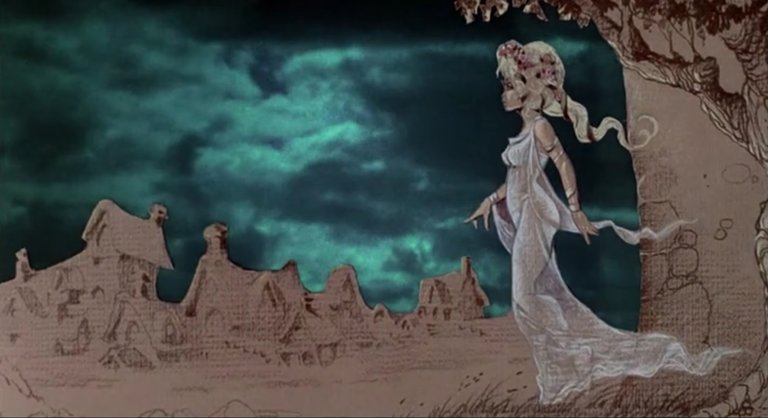
Avatar, along with a group of allies including a warrior named Weehawk, a fairy named Elinore, and a helpful sidekick named Peace, sets out to stop Blackwolf's plans. As the battle between magic and technology intensifies, the film explores the dichotomy between the organic, life-affirming forces of magic and the cold, destructive power of technology. Ultimately, Avatar's mission is not just to stop his brother but to prevent the world from falling into another cycle of technological tyranny and violence.
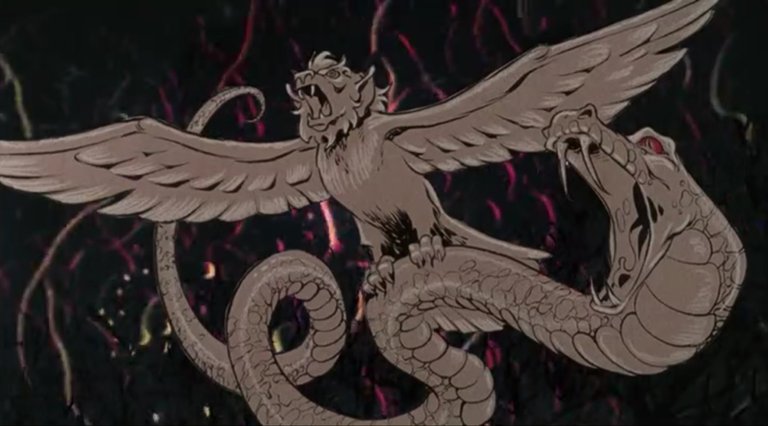
Introduction to the Cast of Characters:
The key characters introduced early on include:
Avatar (voiced by Bob Holt): The protagonist of the film, Avatar is an older, wise wizard who represents the forces of good and magic. He is kind-hearted and reluctant to use his powers for violence, but when his brother Blackwolf threatens the world, Avatar is forced to confront him. Avatar’s character is deeply connected to nature and the healing arts of magic, which contrasts sharply with the destructive technological forces of his brother.
Blackwolf (voiced by Steve Gravers): The antagonist of the film, Blackwolf is Avatar’s brother who represents the forces of evil and technological oppression. Blackwolf uses dark magic and advanced weaponry to conquer the lands and seeks to resurrect the devastating power of the old technological world. His character is ruthless and power-hungry, willing to manipulate others to achieve his goals of domination.
Weehawk (voiced by Richard Romanus): A brave and skilled warrior who joins Avatar in his mission to stop Blackwolf. Weehawk is a key ally, providing physical strength and battle expertise, but his backstory is relatively underdeveloped. Nonetheless, his loyalty to Avatar and his leadership qualities make him a central part of the group of heroes.
Elinore (voiced by Susan Tyrrell): A fairy who becomes Avatar’s ally. Elinore is fiercely independent and has a sassy, no-nonsense attitude. Though she initially comes across as a sidekick, her character plays a significant role in helping Avatar and providing the team with the magical knowledge needed to defeat Blackwolf. She embodies themes of resilience and empowerment.
Peace (voiced by Mark Hamill): A young man who represents the ideal of peace and harmony in the world. Although initially a symbol of innocence, his character serves as a reminder of the fragile nature of peace and how easily it can be threatened by war and tyranny.
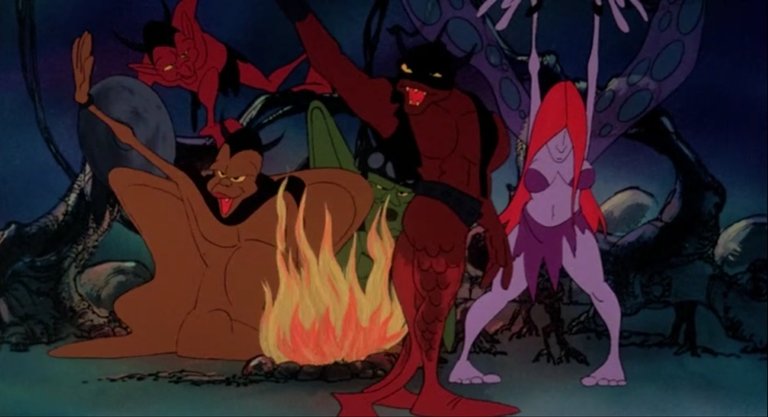
Inciting Incident:
The inciting incident occurs when Blackwolf emerges from the wastelands of Scorch, determined to conquer the world with his forces of technology and mutants. His rise to power begins with a campaign of terror, using dark magic and propaganda to rally his followers. Blackwolf’s resurrection of the old technological forces—embodied in towering war machines and destructive robots—signals a return to the violent, oppressive regime that led to the downfall of the old world.
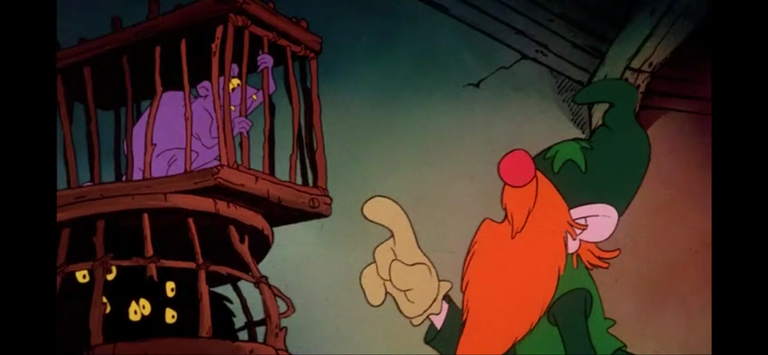
As Avatar hears of Blackwolf’s campaign, he is initially hesitant to intervene, reluctant to engage in battle. However, after witnessing the destruction wrought by Blackwolf’s forces and seeing the suffering of the peaceful inhabitants of the land, Avatar is forced to take action. His reluctance to fight gives way to a resolve to protect the fragile peace and magical world that he has helped maintain.
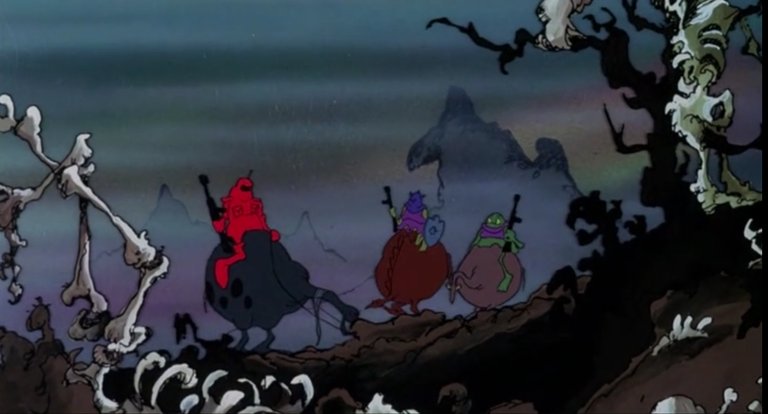
Blackwolf’s Mission:
Blackwolf’s mission is to bring back the technological tyranny that led to the downfall of the previous civilization. His use of dark magic and his control over mutant forces allow him to manipulate and command others to carry out his goals. Blackwolf believes that the destruction of the old world was a result of the overreliance on magic, and he seeks to revive the lost technology of the past to create an empire of fear and control.
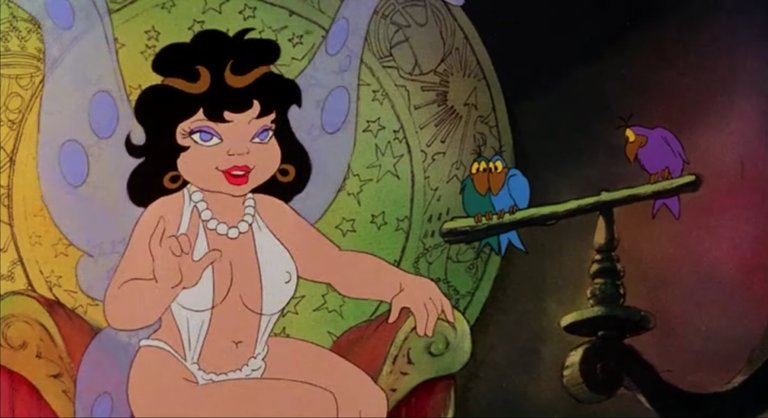
In his quest for power, Blackwolf exploits the weaknesses of human nature, using violence, manipulation, and fear to unite disparate factions under his banner. His ultimate goal is to resurrect the war machines of the previous age—giant robots, destructive weapons, and terrifying creatures—to once again dominate the world. Unlike Avatar, who uses magic to heal and protect, Blackwolf uses his powers to subjugate and destroy, representing the darker side of the human desire for control.
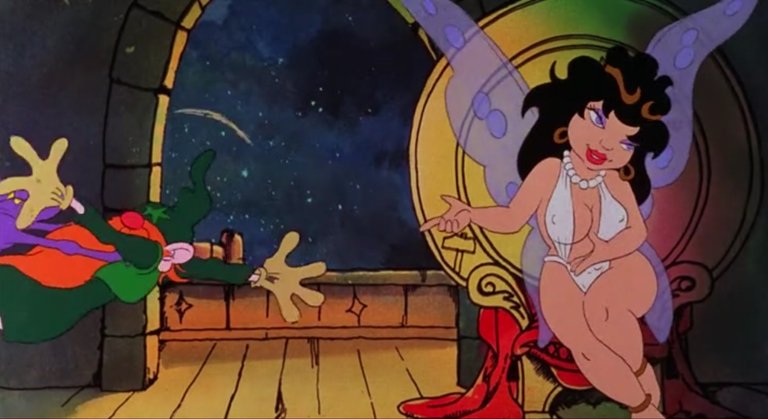
The Human Struggle:
As Avatar and his companions set out to confront Blackwolf, the film delves into the human struggle between magic and technology, peace and war. Avatar is reluctant to engage in battle, seeing the use of violence as a last resort. His internal struggle is evident throughout the film, as he grapples with the moral dilemma of having to fight in order to protect the peaceful world that has developed in the aftermath of the previous wars. Avatar's belief in peace and his refusal to use technology contrast sharply with Blackwolf’s belief that only the return of technology can bring order to the world.
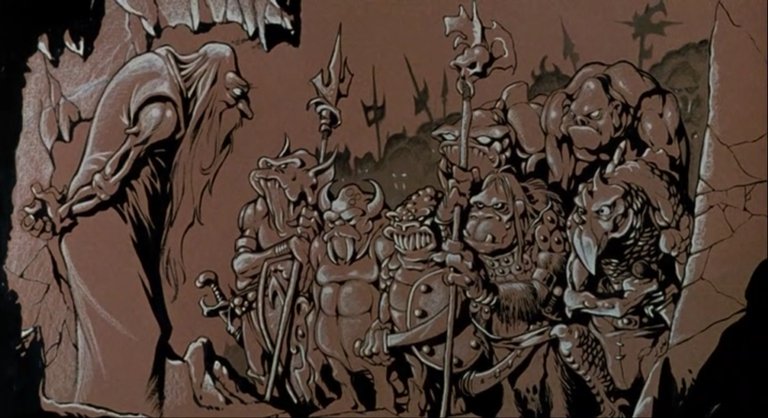
Throughout the film, there are moments where Avatar must come to terms with the limitations of his philosophy. As Blackwolf’s forces grow stronger, Avatar realizes that magic alone may not be enough to save the world. His companions, including the warrior Weehawk and the fiery Elinore, also struggle with their own roles in the conflict, torn between personal desires and the need for collective action.
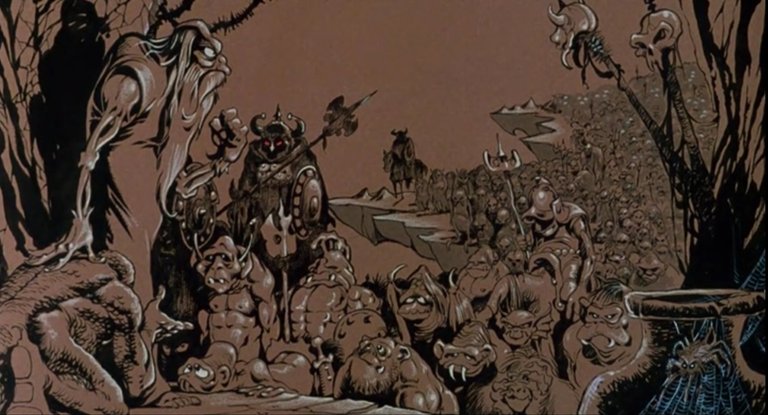
The internal struggle of Avatar, and his eventual acceptance that he must use his powers to fight, reflects larger themes of resistance and the necessity of standing up against tyranny, even when the cost is great.
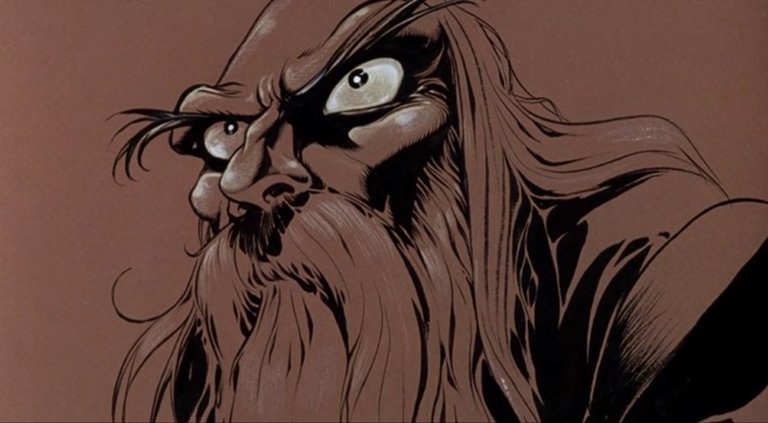
The Climax:
The climax of Wizards is a breathtaking final battle between Avatar and Blackwolf. After an intense journey filled with physical and emotional obstacles, Avatar and his team confront Blackwolf in an epic showdown. The battle is marked by a stark contrast between Avatar’s use of magic and Blackwolf’s reliance on technology. Avatar’s magic is raw and primal, tied to the natural world, while Blackwolf’s technology is cold, mechanical, and lifeless.
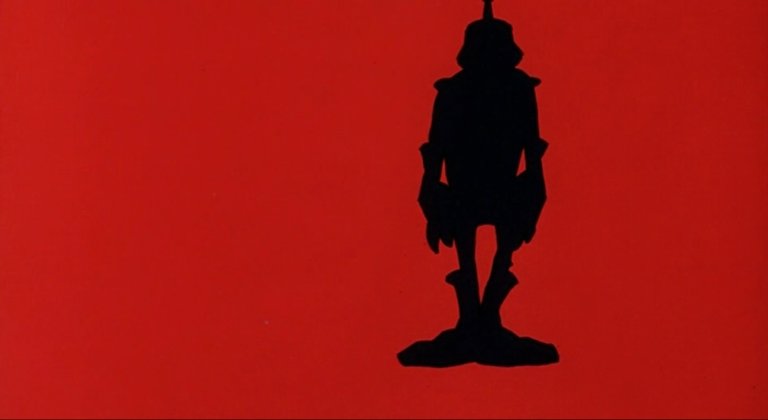
In the final confrontation, Blackwolf unleashes his full arsenal of war machines and mutant creatures. However, Avatar, with the help of his allies, is able to defeat these forces by using his understanding of magic and his deep connection to the earth. The climactic battle is not only about physical combat but also a philosophical contest: the struggle between creation and destruction, nature and machinery, freedom and control.
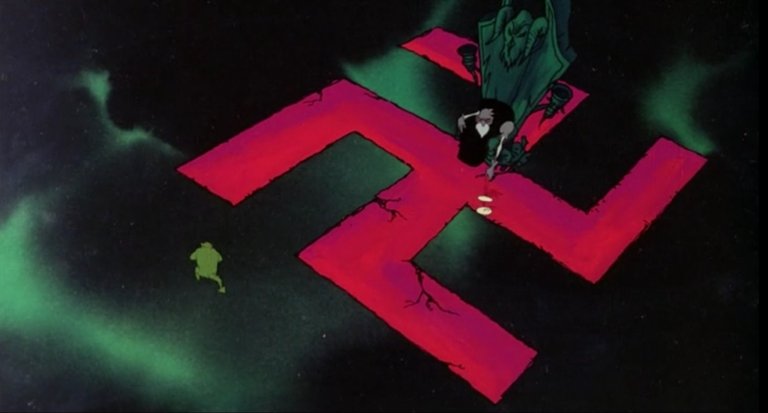
Avatar ultimately defeats Blackwolf not through brute strength but through the wisdom and power of magic. His victory over Blackwolf is symbolic of the triumph of life and nature over the cold, oppressive forces of technology. The film ends on a bittersweet note, acknowledging that while Avatar’s victory brings peace, the ongoing struggle to preserve this peace will continue.
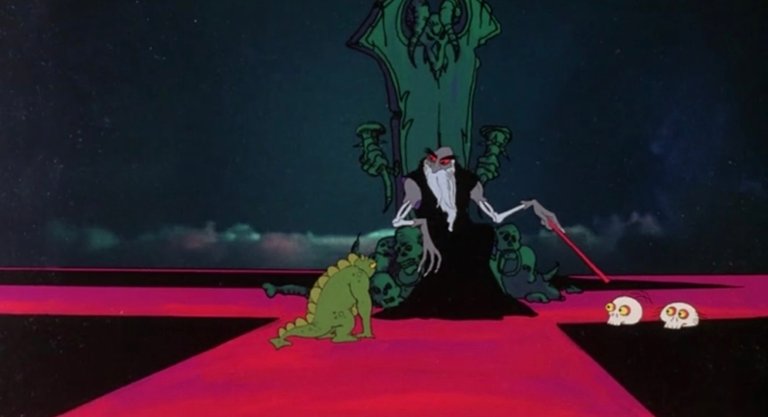
Themes and Analysis:
One of the most prominent themes in Wizards is the conflict between magic and technology. Bakshi explores the idea that while technology has the potential to advance society, it can also lead to violence and destruction, as seen in the cataclysmic wars of the past. Magic, on the other hand, represents harmony with nature, creativity, and the healing power of the earth. However, even magic must confront the destructive forces of technology, leading to the central philosophical question: can peace and freedom exist in a world dominated by technology?
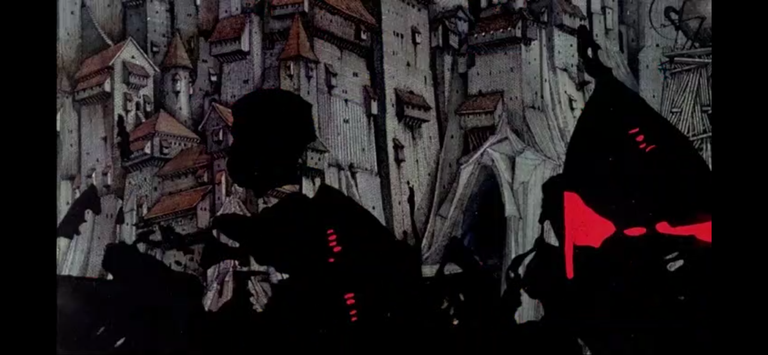
The film also explores themes of power and resistance. Avatar represents the reluctant hero who must overcome his own doubts and fears to face the growing threat of Blackwolf’s tyranny. His journey is one of personal growth, learning that sometimes, to preserve peace, one must fight for it. The contrast between Avatar’s peaceful philosophy and Blackwolf’s violent ideology underscores the difficulty of maintaining a peaceful world when faced with the forces of oppression and violence.
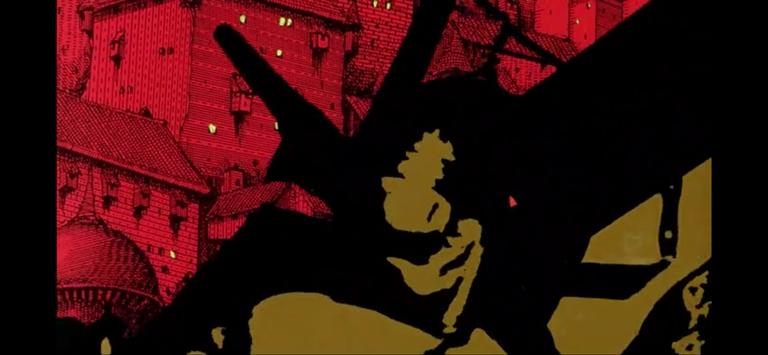
Another important theme is the cyclical nature of history. Wizards is set in a world that has already experienced the destructive consequences of technological warfare. The rise of Blackwolf signals the possibility of repeating history’s mistakes. The film warns against the dangers of technological overreach and the loss of connection with nature and magic, urging viewers to reflect on the consequences of unchecked technological advancement.
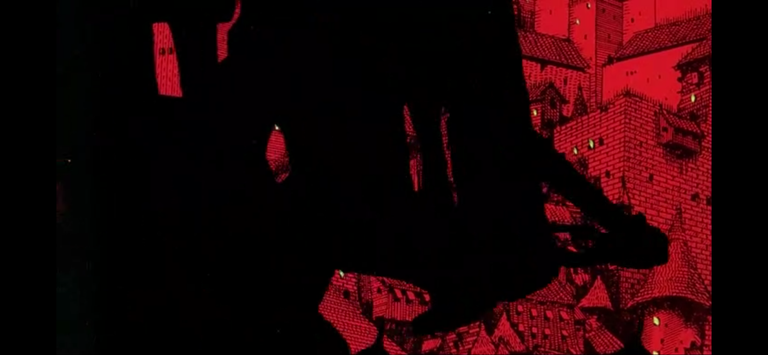
Critical Reception and Legacy:
Upon its release, Wizards received a mixed but generally positive response from critics, particularly for its bold, innovative animation and its mature, philosophical themes. The film was praised for its unique visual style, which combined traditional hand-drawn animation with rotoscoping techniques, giving it a distinctive, surreal quality. While some critics found the animation to be rough and uneven, many appreciated the film’s audacity and willingness to explore complex themes rarely tackled in animated films at the time.
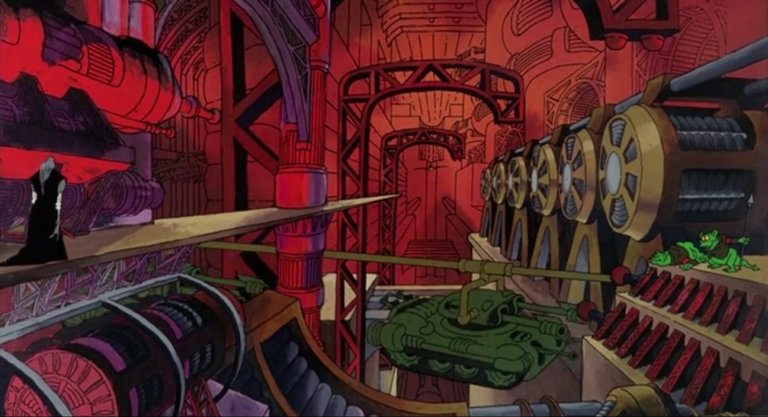
In the years since its release, Wizards has developed a cult following and is considered a key work in the history of adult animation. Its combination of fantasy, science fiction, and political commentary influenced later animated films and series, particularly those that sought to push the boundaries of animation as a medium for adult storytelling. Bakshi’s work, particularly Wizards, remains an important example of animation’s potential to tackle mature, complex themes and to engage with societal issues in a way that was groundbreaking for its time.
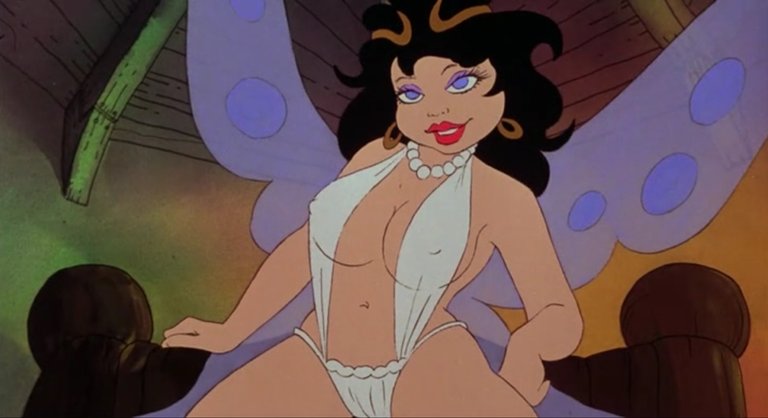
Conclusion:
Wizards is a groundbreaking animated film that explores the conflict between magic and technology, the nature of power and resistance, and the cyclical nature of history. Through its distinctive animation style and thought-provoking narrative, Ralph Bakshi’s Wizards continues to stand as a significant and influential work in the world of adult animation. Its themes of peace, power, and the dangers of unchecked technology remain relevant today, making it a timeless exploration of the human struggle for freedom and harmony in a chaotic world. For me, that all makes Wizards one of rhe most kickass awesome mivies of all time…but then again, I’m also a sucker for these types of things.
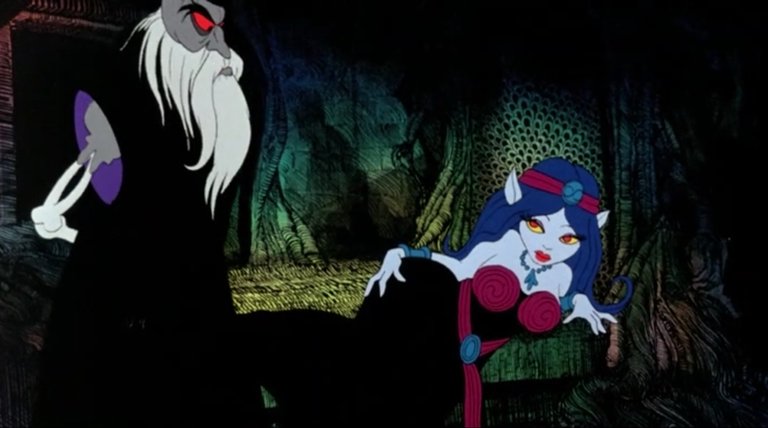
Additional Screenshots!
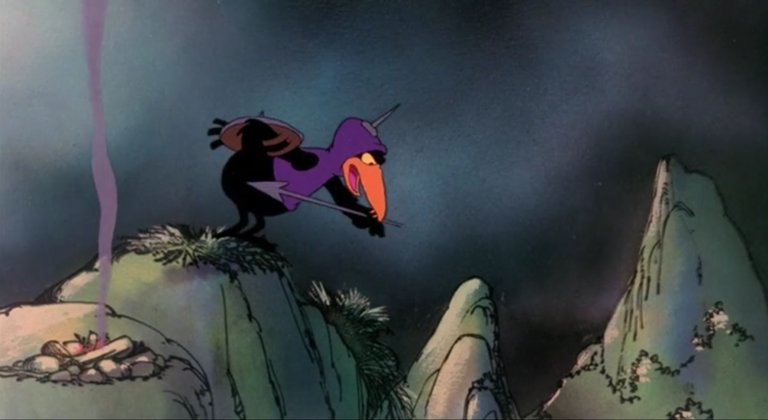
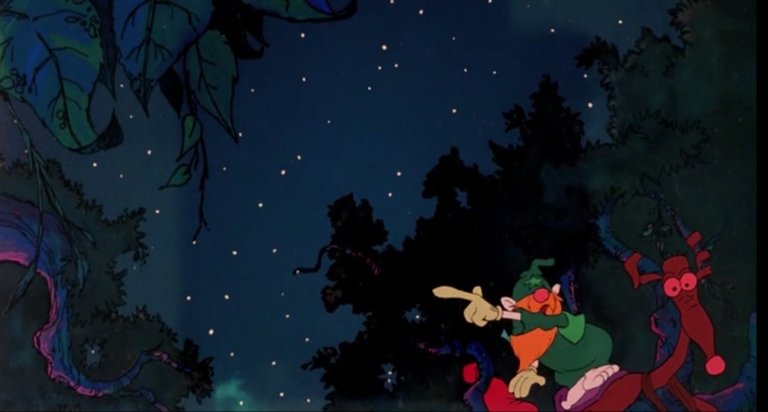
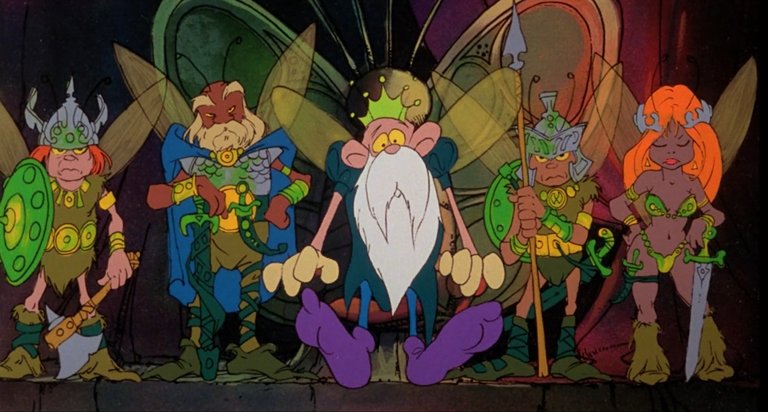
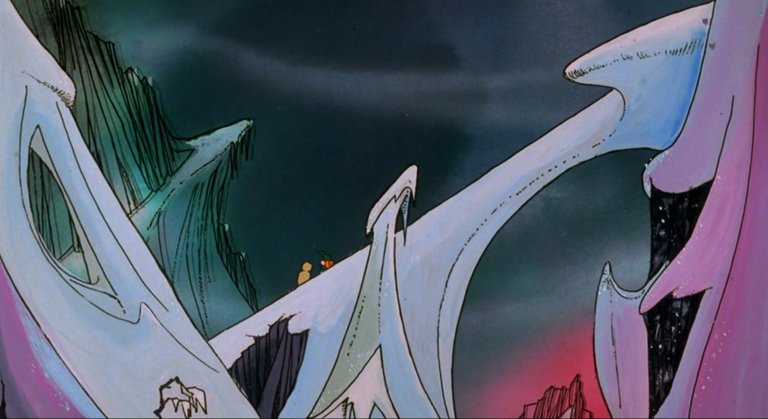
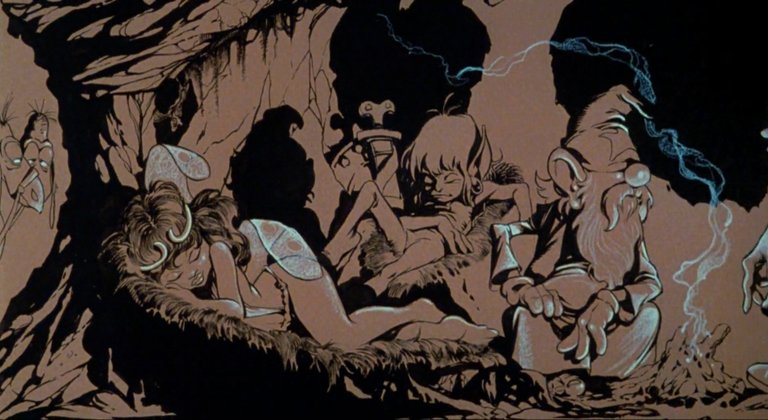
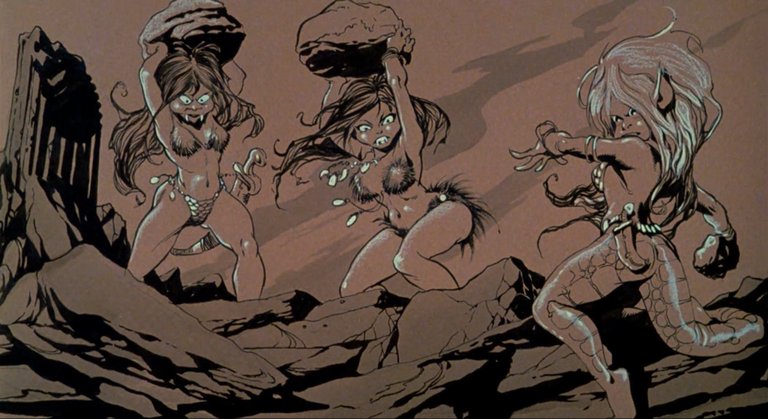
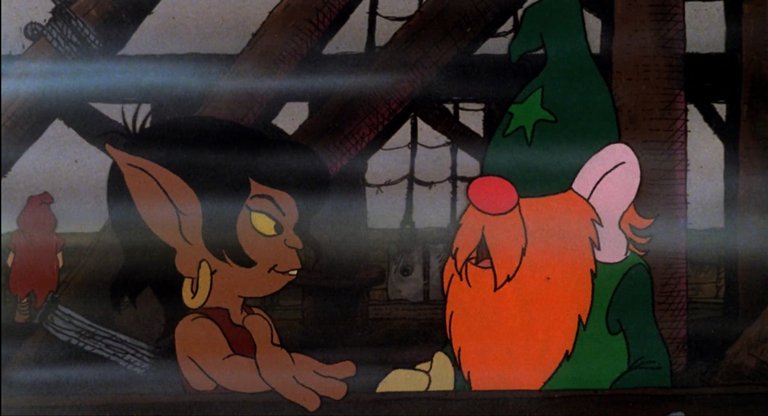
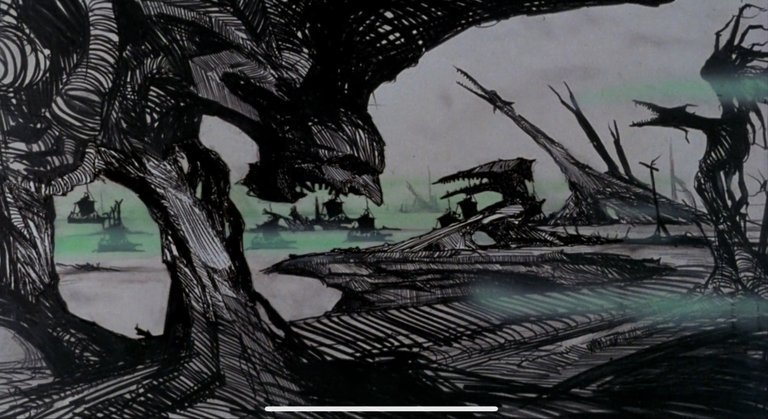
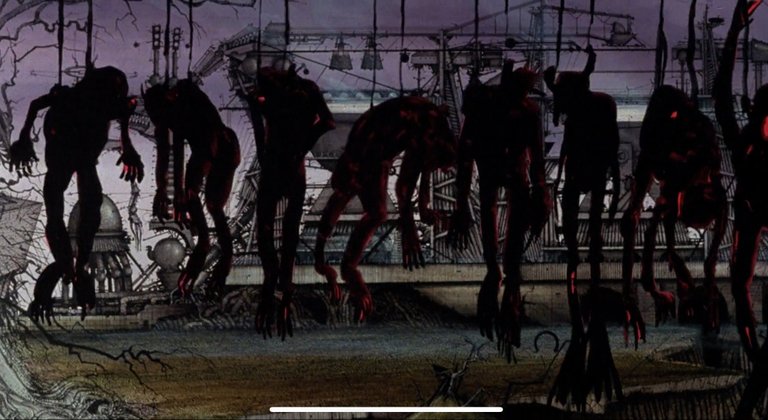
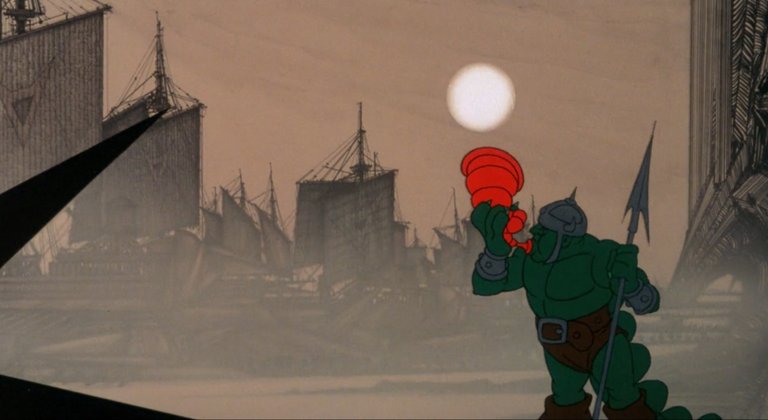
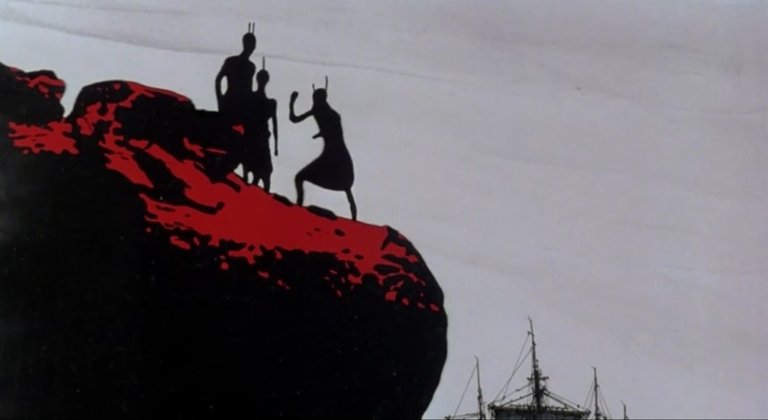
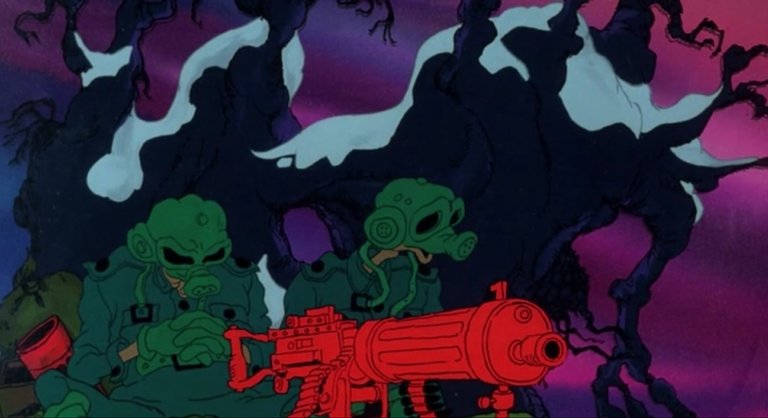
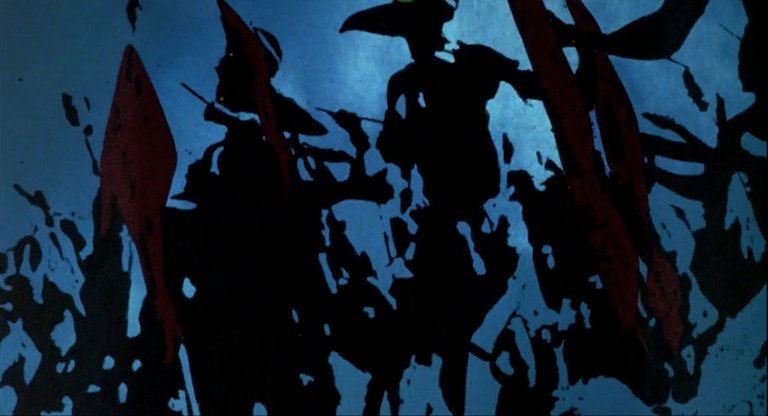
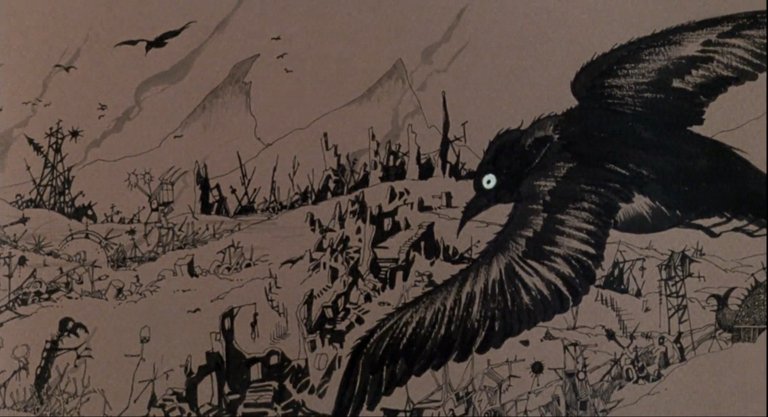
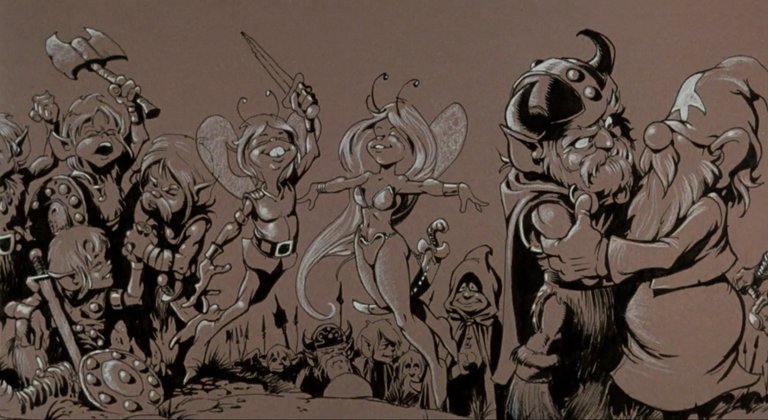
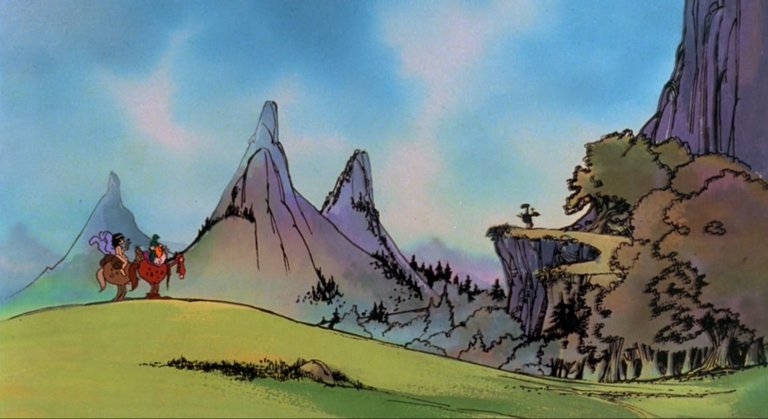
<<< AZL MOVIE REVIEWS >>>

Thanks for checking out some more of my work! As always, I hope you enjoyed witnessing as much as I enjoyed creating!
© Photos and words by @albuslucimus, except where otherwise indicated.

source

Congratulations @albuslucimus! You have completed the following achievement on the Hive blockchain And have been rewarded with New badge(s)
Your next target is to reach 850 posts.
You can view your badges on your board and compare yourself to others in the Ranking
If you no longer want to receive notifications, reply to this comment with the word
STOPBy far, one of the best movie reviews I've ever seen. Probably the very best on Hive. Well done!
Oh wow, that's huge man, thank you!!!
It looks pretty creepy for a cartoon....
Yeah this came out in the beginning of the era of cartoons for grownups. Honestly with the backgrounds and scenery and all, its creepy even for grownups - but would be exponentially creepier if it were intended for kids
Never heard about this one, looks pretty interesting. My favorite from director Ralph Bakshi is American Pop, great animations and a killer soundtrack.
That is on my list! I’m doing Cool World (or something like that) next - but I have already downloaded and verified American Pop and am looking forward to it now more than I already was!
That’s great. Hope to see that review soon.
Thank you! I am looking forward to it. Lately I’ve built up a fairly massive collection of movies from roughly 1900-1979, the work of writing about them all is daunting, but I have been really enjoying taking the time to watch and enjoy these older films :)
Bakshi really succeeded in creating a unique work that goes beyond simple animation. The struggle between magic and technology is such a relevant theme today.
Amen dude, yeah it is! This film seems only to become more relevant as time passes
una historia buena, excelente reseña!
good story, excellent review!
Thank you!!!